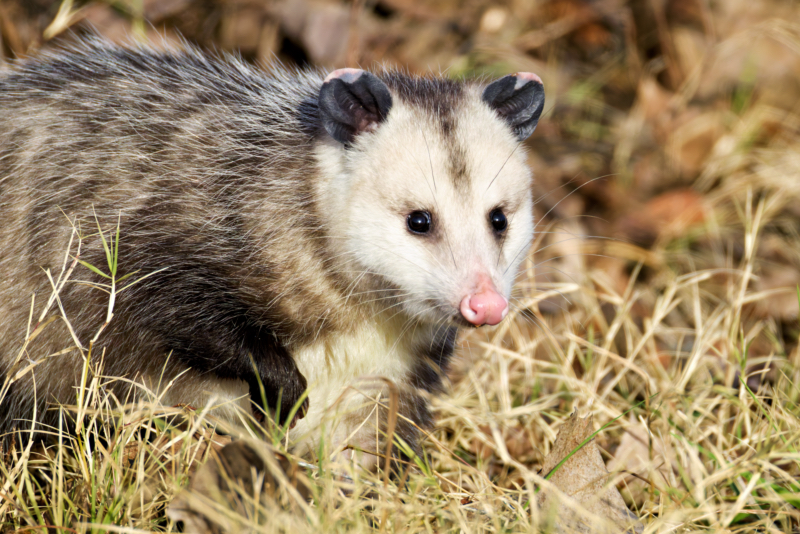The last time I photographed an opossum was back in May at Sequoyah National Wildlife Refuge in Oklahoma (Face-to-Face with an Opossum in Oklahoma). On December 19, 2024, during the final days of fall, I had another chance encounter with one at the same refuge. This time, it was crossing the auto tour road.

I parked my truck and got out, hoping to capture a few shots. At first, it seemed unlikely. The opossum moved quickly across the road and vanished into the hollow section of a nearby tree. For a moment, I thought it might stay hidden, blending seamlessly into the shadows of the early morning light. The stillness of the scene added to the suspense, as I wondered if it would reappear or if the moment was lost. After a few moments, it reemerged, hesitated near the tree, and spotted me standing in the road. It paused briefly, giving me a good look, before continuing across the road and vanishing into the brush.
These unexpected moments are part of what makes wildlife photography so rewarding. They allow me to connect deeply with nature, observe unique animal behaviors, and share those experiences with others who may never have the chance to see these creatures in their natural habitat.
Late Fall Behavior of Opossums
As the days grow colder, opossums begin to adapt to the changing season. Here’s how they prepare for the approaching winter:
- No Hibernation: Opossums do not hibernate. Even as temperatures drop, they remain active, although they may spend more time in their dens to avoid harsher conditions.
- Seeking Shelter: In late fall, opossums start seeking warm, dry shelters to prepare for colder months. I’ve observed them using hollow logs, tree cavities, and even burrows abandoned by other animals, which they sometimes enhance with leaves and twigs for added insulation.
- Vulnerability to Cold: Their thin fur and exposed tails, ears, and paws make them prone to frostbite, making the need for adequate shelter critical as winter approaches. For more information on opossum behavior and adaptations, visit Strange and Surprising Facts about Opossums
.
Foraging and Activity
- Diet: Opossums are opportunistic feeders, scavenging for whatever they can find. As food sources become scarcer, they may scavenge through garbage, compost, or any accessible food. During this time of year, they often search for fallen fruits, insects, small rodents, or even carrion.
- Daily Patterns: Opossums remain primarily nocturnal, foraging at night. However, during especially cold spells, they may stay in their dens until temperatures rise.
This encounter with an opossum in Oklahoma offered a glimpse into how these adaptable creatures navigate the challenges of late fall. Moments like these remind me why I enjoy wildlife photography—capturing the transition of seasons and the resilience of the animals that inhabit these landscapes.

Thanks for another great blog/article and photographs. The link to the National Wildlife’s Federation is not working, and I wonder if it is because the period at the end of the sentence seems to be included? Just letting you know, you don’t need to show this comment.
Thank you and thanks for letting me know about the bad link!